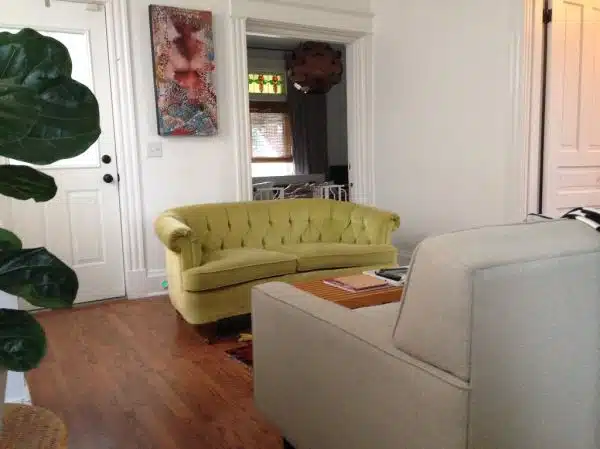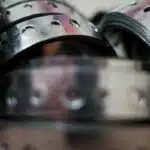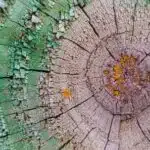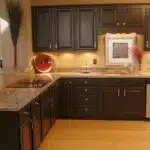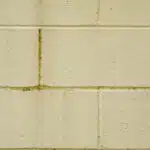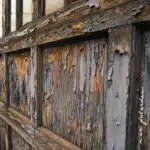Chalkboard walls have become increasingly popular in recent years due to their versatility in both home and office settings. Not only do they serve as a functional space for jotting down notes or reminders, but they also provide a unique backdrop for artwork or inspirational quotes.
Creating a chalkboard wall may seem daunting, but with the right tools and techniques, it can be a simple DIY project that adds character and charm to any space. In this article, we will explore the steps needed to create a chalkboard wall, including preparation, painting, and maintenance. Whether you are looking to add a playful touch to your child’s bedroom or create an interactive workspace in your office, this guide will provide you with the necessary knowledge and skills to achieve your desired result.
Choosing The Right Wall
Imagine walking into a room that has a vibrant and fully functional chalkboard wall. The wall is lively with artistic expressions, notes, and reminders, beckoning you to engage with it. Indeed, such a wall can be a great addition to any home or office space. However, before setting out to create one, it’s crucial to select the right wall. Wall selection is fundamental because it determines the success of your project.
The first step in choosing the right wall is examining its location. Consider selecting a well-ventilated area that’s not susceptible to moisture or dampness, as this can cause problems for the paint and the wall surface. It’s advisable to avoid walls that receive direct sunlight for long hours or are prone to extreme temperatures because they can cause fading, cracking, and peeling of the paint.
Another critical consideration when selecting a wall is color coordination. You want your chalkboard wall to blend seamlessly with its surroundings while creating an eye-catching contrast that enhances the entire room’s appearance. For instance, if your space has neutral colors like beige or cream on its walls, consider painting your chalkboard wall black to create an elegant contrast that adds depth and character.
In conclusion, selecting the right wall for your chalkboard project involves more than just finding an empty space on which to apply paint. Wall selection entails considering factors like location and color coordination for optimal results. In the next section, we’ll delve into measuring and planning—the foundational steps towards creating a successful chalkboard wall project.
Measuring And Planning
Accurate measuring and planning is essential to creating a successful chalkboard wall. Before beginning, ensure that the wall is smooth and free of any bumps or imperfections. If necessary, sand it down and apply a coat of primer to create an even surface. Next, measure the length and width of the area where you want the chalkboard to be placed. Use a level to ensure that your lines are straight and even.
Once you have determined the size of your chalkboard, consider the texture of your wall. If it is too rough or textured, it may be difficult for the chalk to write smoothly on the surface. In this case, you may want to consider applying a smoother surface over the top of your textured wall before applying your chalkboard paint. This will help ensure that your writing is clear and legible.
Creating a chalkboard wall is a fun and creative way to add functionality and style to any space in your home. However, without proper measuring accuracy and consideration for wall texture, your project could quickly become frustrating or unsuccessful. Follow these tips to create a smooth surface area for optimal chalk-writing capabilities in your new DIY project.
- 4 Tips for Accurate Measuring
- 5 Ways to Plan Your Chalkboard Wall Design
- The Importance of Smooth Wall Texture
- Creative Ideas for Decorating Your Chalkboard Wall
Moving onto gathering materials, there are several items you will need in order to make sure that your chalkboard wall turns out exactly as you envisioned it.
Gathering Materials
After measuring and planning, the next step in creating a chalkboard wall is sourcing materials. This involves gathering all the necessary tools and supplies needed for the project. Before starting, it is important to determine a budget and stick to it as closely as possible.
When it comes to sourcing materials, there are a few key things to keep in mind. First, make sure you have enough paint to cover the entire surface area of your wall. This can be calculated by multiplying the width by the height of the wall. Additionally, consider investing in high-quality brushes and rollers that will help ensure an even coat of paint. Finally, don’t forget about any additional tools or supplies that may be needed such as painter’s tape or sandpaper.
Budget planning is also an important aspect of this process. While creating a chalkboard wall can be a fun DIY project, it’s important to remember that costs can add up quickly. Consider shopping around for deals on supplies and tools or purchasing items secondhand if possible. It may also be helpful to prioritize which materials are most important and allocate more funds towards those items.
| Pros | Cons | Emotion |
|---|---|---|
| Easy to clean | Can be messy during installation | Satisfaction in cleanliness |
| Customizable size and design | May require multiple coats of paint for full coverage | Creative fulfillment |
| Fun addition for children’s play areas | Can create dust while writing on board | Joyful playtime |
Now that all necessary materials have been sourced and budgeted for, the next step is preparing the surface.
Preparing The Surface
Before starting to paint the surface, it is important to ensure that the wall is clean and smooth. This will help the paint adhere better and prevent any bumps or ridges from showing through. Begin by cleaning the wall with a damp cloth or sponge to remove any dirt or dust. If there are any stubborn spots, use a mild detergent and water solution.
Once the wall is clean, use sandpaper to even out any rough patches or imperfections on the surface. This step is crucial in achieving a smooth finish for your chalkboard wall. Use a fine-grit sandpaper, such as 220 grit, and lightly sand the entire surface in a circular motion. Be sure to wipe away any dust with a dry cloth before moving on to painting.
By properly preparing the surface of your wall, you can ensure that your chalkboard paint will adhere smoothly and evenly. Using sandpaper and cleaning supplies will help you achieve a flawless finish. In the next section, we will discuss how to tape off the area before painting.
Taping Off The Area
- Before beginning the project of creating a chalkboard wall, the wall should be thoroughly cleaned and dried to ensure a smooth surface for the chalkboard paint.
- The next step is to properly measure and tape off the area of the wall that you would like to paint.
- To do so, use a measuring tape and a pencil to mark off the boundaries of the chalkboard wall and use painter’s tape to secure the edges of the area.
- When taping off the area, be sure to carefully measure and press down the tape so that the paint will not seep underneath the tape when applied.
Preparing The Wall
As you prepare to create your own chalkboard wall, it is important to start with a solid foundation. This begins with selecting the right wall for the job. When choosing a wall, consider its location and how it will be used. It is best to choose a smooth, flat surface that is free from any bumps or imperfections. This will ensure that your chalkboard paint goes on smoothly and looks great when finished.
Once you have selected the right wall, it’s time to prepare the surface for painting. This involves cleaning the wall thoroughly to remove any dirt or debris that may be present. Use a damp cloth or sponge to wipe down the entire surface of the wall, making sure to get into all of the corners and crevices. Allow the wall to dry completely before moving on to the next step.
After cleaning, it is important to tape off the area where you want your chalkboard paint to go. Use painter’s tape around all edges of where you want your chalkboard area to stop. Make sure that you press down firmly on the tape so that there are no gaps where paint can seep through. Once everything is securely taped off, you can move on to painting your chalkboard wall!
Taping Off The Area
To ensure that your chalkboard wall looks neat and professional, it is important to tape off the area where you want your chalkboard paint to go. This step will help define the boundaries of your chalkboard space and prevent any paint from spilling over onto other parts of the wall. To get started, select a high-quality painter’s tape that is designed for use on walls. You can find these tapes at most home improvement stores or online.
When taping off the area, it is important to be precise and careful. Use a level to ensure that your lines are straight and even, and take your time when applying the tape. The last thing you want is for paint to seep through gaps in the tape or for lines to look uneven. Once you have taped off the area, step back and take a look at your design ideas. Are there any changes you would like to make? Now is the time to make adjustments before moving on to painting.
After you have finished painting your chalkboard wall, carefully remove the tape while the paint is still wet. This will help create clean edges and prevent any peeling or chipping of paint in the future. If there are any areas where paint has bled through, use a small brush or touch-up tool to make corrections while the paint is still wet. With proper taping techniques and maintenance tips such as avoiding using abrasive cleaners on your chalkboard wall, you can enjoy a beautiful and functional addition to your home decor!
Applying Primer
Imagine a painter preparing a canvas for a masterpiece. The first step is applying primer to the surface, ensuring that it’s ready to hold the colors and textures of the artwork. Similarly, when creating a chalkboard wall, applying primer is crucial for achieving the desired finish.
Types of primers may vary depending on the surface you’re working with. For example, if you’re painting over a glossy or oil-based surface, you’ll need an oil-based primer to ensure that the paint adheres properly. On the other hand, if your surface is porous or textured, a water-based primer would be more suitable. It’s important to choose the right type of primer for your specific needs to ensure optimal results.
Tips for priming tricky surfaces include thoroughly cleaning and sanding the area before applying primer. This will help remove any dirt or debris that could interfere with adhesion and create bumps in your finished product. Additionally, using a brush or roller designed for smooth surfaces can help ensure even coverage on tricky areas like corners and edges.
With proper preparation and application techniques, priming your chalkboard wall can make all the difference in achieving a flawless finish. In the next section, we’ll explore how to choose the perfect chalkboard paint for your project.
Choosing Chalkboard Paint
- When selecting a chalkboard paint, it is important to find one that is true black color, as this will allow the chalk to be seen clearly on the wall.
- Prior to applying the paint, the wall surface must be prepared, by wiping it down with a damp cloth to remove dust and grime.
- The wall should then be given a light sanding, to ensure that the paint adheres properly, and then wiped down again with a damp cloth.
- A primer should be applied to the wall before painting, to ensure that the chalkboard paint goes on smoothly and evenly.
Selecting The Type Of Paint
Choosing the right type of paint is crucial in achieving a beautiful chalkboard wall. There are several factors to consider when selecting the type of paint, such as the brand comparison and DIY alternatives. As a home decorating expert, it is my pleasure to guide you through this process.
When comparing brands, it is important to read product reviews and gather information from reliable sources. Some of the most popular brands include Rust-Oleum, Benjamin Moore, and Krylon. These brands offer different types of chalkboard paints with varying prices and qualities. By comparing these brands, you can determine which one is best suited for your project.
Another option for those who want to save money or prefer a DIY approach is to create their own chalkboard paint using common household items such as tile grout or unsanded grout mixed with latex paint. These DIY alternatives are cost-effective and easy to make. However, they may not produce the same quality finish as commercially available brands.
In conclusion, selecting the right type of paint for your chalkboard wall involves considering factors such as brand comparison and DIY alternatives. By doing so, you can achieve a beautiful and functional chalkboard wall that will enhance the overall look of your home or workspace.
Preparing The Wall Surface
When it comes to choosing chalkboard paint, the surface preparation is just as important as selecting the right type of paint. Properly preparing the wall surface ensures that the paint adheres properly and produces a smooth finish. One of the first steps in preparing the wall is to clean it thoroughly, removing any dirt or debris. Once cleaned, it is essential to address any common surface issues such as cracks or holes before applying any primer.
Types of primer play a crucial role in ensuring that the chalkboard paint adheres correctly to the wall surface. The most commonly used primers for chalkboard walls are oil-based primers and shellac-based primers. Oil-based primers work best on surfaces with high moisture content, while shellac-based primers are ideal for sealing in stains and odors. It is important to choose a primer that suits your specific needs as this will affect how well your chalkboard paint adheres.
In summary, preparing the wall surface for your chalkboard project requires cleaning and addressing common issues such as cracks or holes. Using an appropriate primer will also ensure that your chosen chalkboard paint adheres correctly to your wall surface. Taking these steps will help you achieve a beautiful and functional chalkboard wall that will enhance your home or workspace’s overall look and feel.
Mixing The Paint
To achieve the perfect chalkboard wall, it’s important to mix the paint properly. The consistency of the paint will determine how well it adheres to the wall and how easy it is to write on. One of the most critical factors when mixing paint for a chalkboard wall is achieving the right consistency. The goal is to make sure that the paint isn’t too thick or too thin.
When mixing your chalkboard paint, start by pouring out some of the paint into a separate container. This will allow you to add in other ingredients without contaminating your entire batch of paint. Next, add in a tablespoon of unsanded tile grout per cup of paint. Mix thoroughly until there are no lumps left in your mixture. You can also use tinted paints if you want different color options for your chalkboard wall.
To help clarify this point, refer to the table below:
| Paint Consistency | Ideal Thickness |
|---|---|
| Too Thick | Add water |
| Too Thin | Add more grout |
By following these guidelines, you’ll be able to create a perfect mixture every time. Once you’ve achieved this consistency, you can begin applying your first coat of paint onto your prepared surface without worrying about drips or clumps getting in the way.
Applying The First Coat
After mixing the paint, it’s time to apply the first coat to your chalkboard wall. Using a roller is your best bet for applying the paint evenly and quickly. Be sure to start at the top of the wall and work your way down, making long strokes in a “W” pattern. This will help prevent drips or uneven coverage.
Once you’ve applied the first coat, let it dry completely before moving on to the second coat. Before sanding the first coat, take a moment to assess any mistakes or imperfections that may need fixing. If you notice any areas where the paint is too thin or thick, use a brush to even it out. If there are drips or smudges, wait until they’ve dried completely and then gently sand them away with fine-grit sandpaper.
While applying the first coat may seem daunting, don’t worry if mistakes happen – they can always be fixed! Just take your time and be mindful of any issues that arise during the process. With patience and care, you’ll end up with a beautiful chalkboard wall that will add character and function to any room in your home.
Applying The Second Coat
With the first coat completely dried, it’s now time to apply the second coat of paint. This is where your chalkboard wall will start taking shape and you’ll begin to see the beauty of your hard work. Applying this second layer is crucial as it will help achieve an even and consistent finish.
To ensure a consistent coating, use a high-quality roller brush that’s specifically designed for textured surfaces. Roll in a “W” pattern, starting from the top corner and moving downwards. Don’t forget to paint along the edges and corners of the wall with a smaller brush or roller. Tips for consistency include ensuring that every section is covered uniformly before moving onto the next area.
Avoiding drips and smudges is essential in achieving an impeccable finish. To avoid drips, don’t overload your roller with too much paint, as this can result in excess dripping down your walls. Similarly, smudges can be avoided by allowing each layer to dry completely before applying another coat. With these tips in mind, you’re on track to having an immaculate chalkboard wall that you’ll love writing on for years to come.
As you move onto removing the tape, keep in mind that patience is key. You want to make sure that every layer of paint has fully dried before removing any tape from your wall. Peeling off tape too soon can result in uneven lines or even worse – peeling off some of the paint along with it! So take your time and gently peel off each strip of tape one at a time, revealing your newly painted chalkboard wall underneath.
Removing The Tape
Once you have finished painting the chalkboard wall, the next step would be removing the tape. It is recommended to wait until the paint has dried for at least 24 hours before taking off the tape to ensure that it does not peel off any of the paint.
Using heat can make it easier to remove the tape without damaging the paint or leaving adhesive residue. You can use a hairdryer on a low setting and gently heat up each section of tape for a few seconds before peeling it off. Be careful not to overheat or burn the tape, as this could cause damage to your newly painted chalkboard wall.
Proper disposal of the tape is also essential after removal. Make sure to discard all used tapes in a trash bin instead of littering around. If you are using painter’s tape, you can reuse them for other projects by storing them in an airtight container away from dust and moisture.
With the tape removed, your chalkboard wall is starting to take shape. The next step would be conditioning your board before writing on it.
Conditioning The Chalkboard
Now that the tape has been removed from the chalkboard surface, it’s time to condition it for use. Conditioning is an important step in making sure that the chalkboard surface is ready to be written on and erased without leaving behind any ghosting or smudging. Before you start conditioning, make sure that the surface is completely clean and free of any dust or debris.
To condition the chalkboard surface, start by rubbing a clean white chalk over the entire surface. Be sure to cover every inch of the board evenly. Then, using a soft cloth or eraser, wipe off the excess chalk dust. This step will help to fill in any pores or crevices in the board and create a smooth writing surface.
Here are some cleaning tips to keep your chalkboard looking great:
- Use a damp cloth or sponge to wipe down the board after each use.
- Avoid using abrasive cleaners or chemicals on the surface as they can damage it.
- If you need to remove stubborn marks or stains, try using a mixture of water and vinegar.
Now that your chalkboard wall is conditioned and ready for use, it’s time to add some finishing touches!
Adding Finishing Touches
To truly make your chalkboard wall stand out, adding some finishing touches is essential. One great way to add a personal touch to your chalkboard wall is to incorporate some chalkboard art. This can be as simple as drawing a border around the edge of the board or as elaborate as creating an entire mural.
Another fun way to decorate your chalkboard wall is by adding seasonal decorations. For example, during the fall season, you could draw pumpkins and leaves around the board. During the winter months, you could draw snowflakes and Christmas trees. By changing up the decorations on your chalkboard wall throughout the year, you can keep your space feeling fresh and festive.
Overall, adding finishing touches to your chalkboard wall is a great way to make it feel more personalized and unique. Whether you’re incorporating chalkboard art or seasonal decorations, there are endless possibilities for making your space feel truly special.
As exciting as it may be to decorate your new chalkboard wall, it’s important not to forget about maintaining it. In order to keep your chalkboard looking its best, regular cleaning is necessary. In the next section, we’ll discuss some tips for keeping your chalkboard clean and in good condition over time.
Maintaining The Chalkboard
Now that you have added the finishing touches to your chalkboard wall, it is time to learn how to maintain it. Cleaning techniques for a chalkboard wall are crucial as they ensure that the surface remains in its best condition. Use a soft cloth or eraser to wipe off any excess chalk dust on the surface regularly. For stubborn stains, mix equal parts of water and vinegar and apply the solution on the stain using a sponge. Wipe off with a damp cloth and dry it immediately.
Apart from maintaining your wall, you can also get creative with designs on your chalkboard wall. You may draw intricate patterns or create themed designs based on different seasons or events such as Halloween or Christmas. Another idea is to use stencils or stickers to create unique designs that will give your room some character.
Incorporating a chalkboard wall into your home décor not only adds functionality but also creates a fun and interactive space for everyone. With proper maintenance, you can enjoy your new chalkboard wall for years to come while exploring different creative ideas for designs.
*Get inspired by checking out other people’s chalkboard walls on social media platforms *Experiment with different colors of chalks to add some vibrancy *Have fun decorating with friends and family *Try out different fonts and handwriting styles to add some personality
Enjoying Your New Chalkboard Wall
Did you know that having a chalkboard wall in your home can benefit not only your creativity but also your organizational skills? According to a study by the University of Plymouth, using a chalkboard for brainstorming and planning can improve memory recall and aid in problem-solving. Additionally, having a designated space for writing reminders and to-do lists can reduce stress and increase productivity.
Now that you have successfully created your chalkboard wall, it’s time to start enjoying it! One way to do this is by incorporating chalkboard art into your home decor. With endless possibilities for designs and styles, you can create unique pieces that reflect your personal taste. Whether it’s a quote or an intricate illustration, chalkboard art adds character and charm to any room.
Another way to make the most of your new feature is by using it for organization. From meal planning to scheduling appointments, having a centralized location for important information can simplify daily tasks. To help get started, here’s an example table for weekly meal planning:
| Day | Breakfast | Lunch | Dinner |
|---|---|---|---|
| Monday | Oatmeal with fruit | Grilled chicken salad | Spaghetti with meat sauce |
| Tuesday | Greek yogurt with granola | Turkey wrap with veggies | Baked salmon with roasted vegetables |
| Wednesday | Scrambled eggs with toast | Quinoa salad with avocado dressing | Beef stir-fry with rice |
| Thursday | Smoothie bowl with toppings | Chickpea curry over rice | Tacos with beans and guacamole |
Incorporating chalkboard art and organization into your daily routine can add both practicality and creativity to your life. With these tips, you’ll be well on your way to fully embracing the benefits of your new chalkboard wall.
Conclusion
Chalkboard walls have become a popular trend in home decor, and with good reason. Not only do they add a unique touch to any room, but they also provide a fun and functional space for writing notes or expressing creativity. According to a recent study by the National Association of Home Builders, chalkboard paint is one of the fastest-growing trends in home decorating.
To create a chalkboard wall, it is important to choose the right wall, measure and plan accordingly, gather materials, prepare the surface, tape off the area, condition the chalkboard and add finishing touches. Maintaining your new chalkboard wall is also crucial to ensure its longevity. With patience and attention to detail, you can transform any room into a creative haven with a stylish chalkboard wall.
Incorporating this trend into your home decor not only adds functionality but also an artistic flair that is sure to impress guests. Whether you use it as an organizational tool or simply as an outlet for creativity, a chalkboard wall can be customized to suit any style or taste. So why not give it a try and enjoy the endless possibilities that come with having your own personal canvas?
Image Credits
- “Removing Chalkboard Wall” by HAUS By Emily May (featured)

